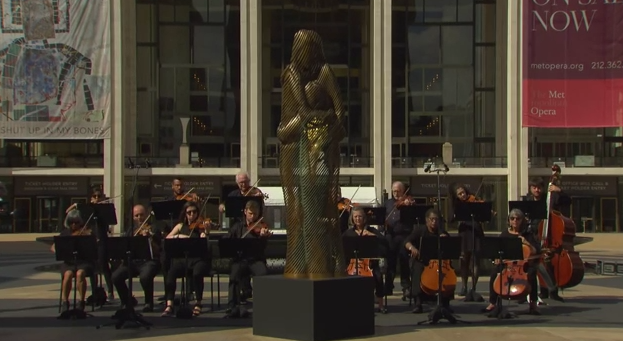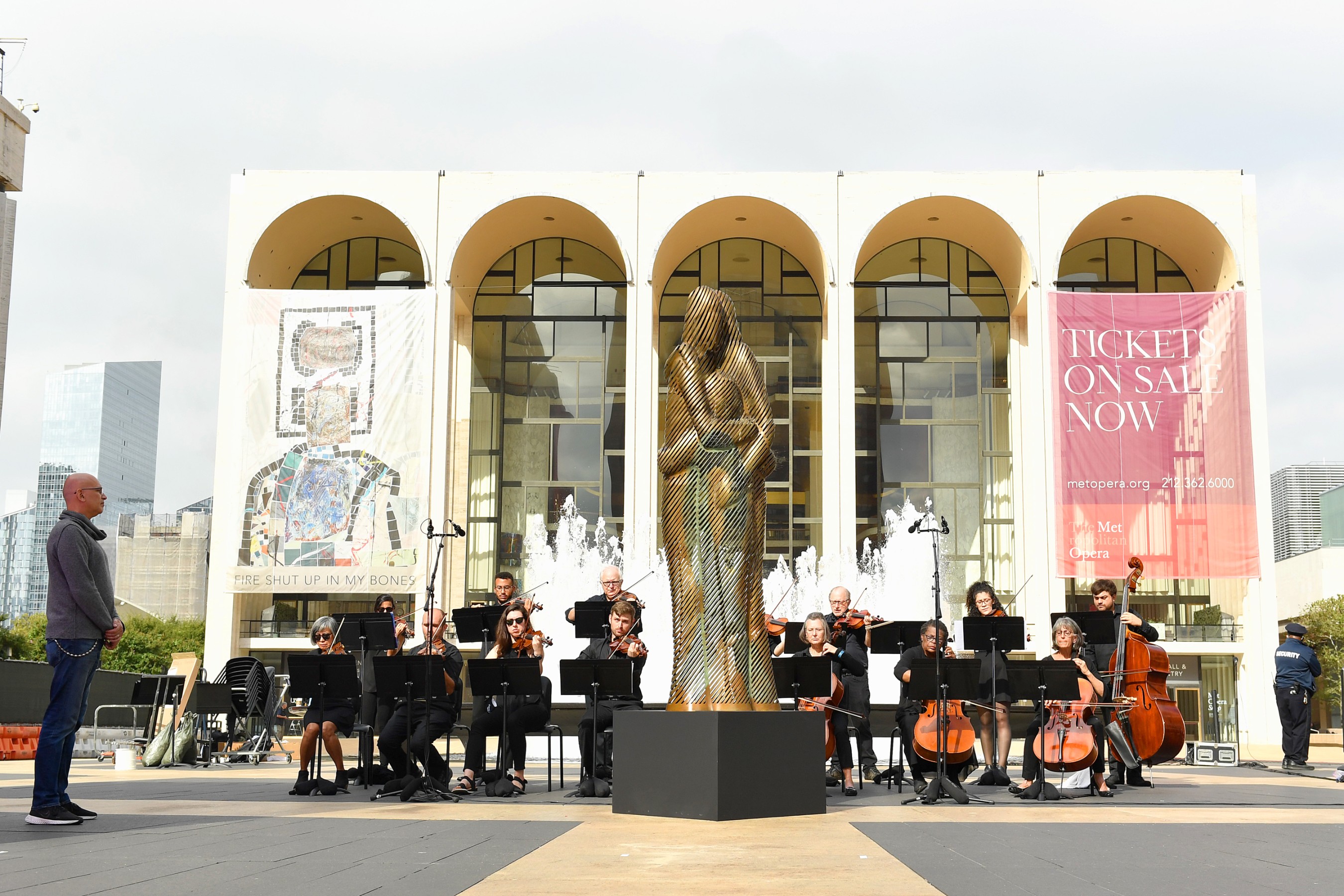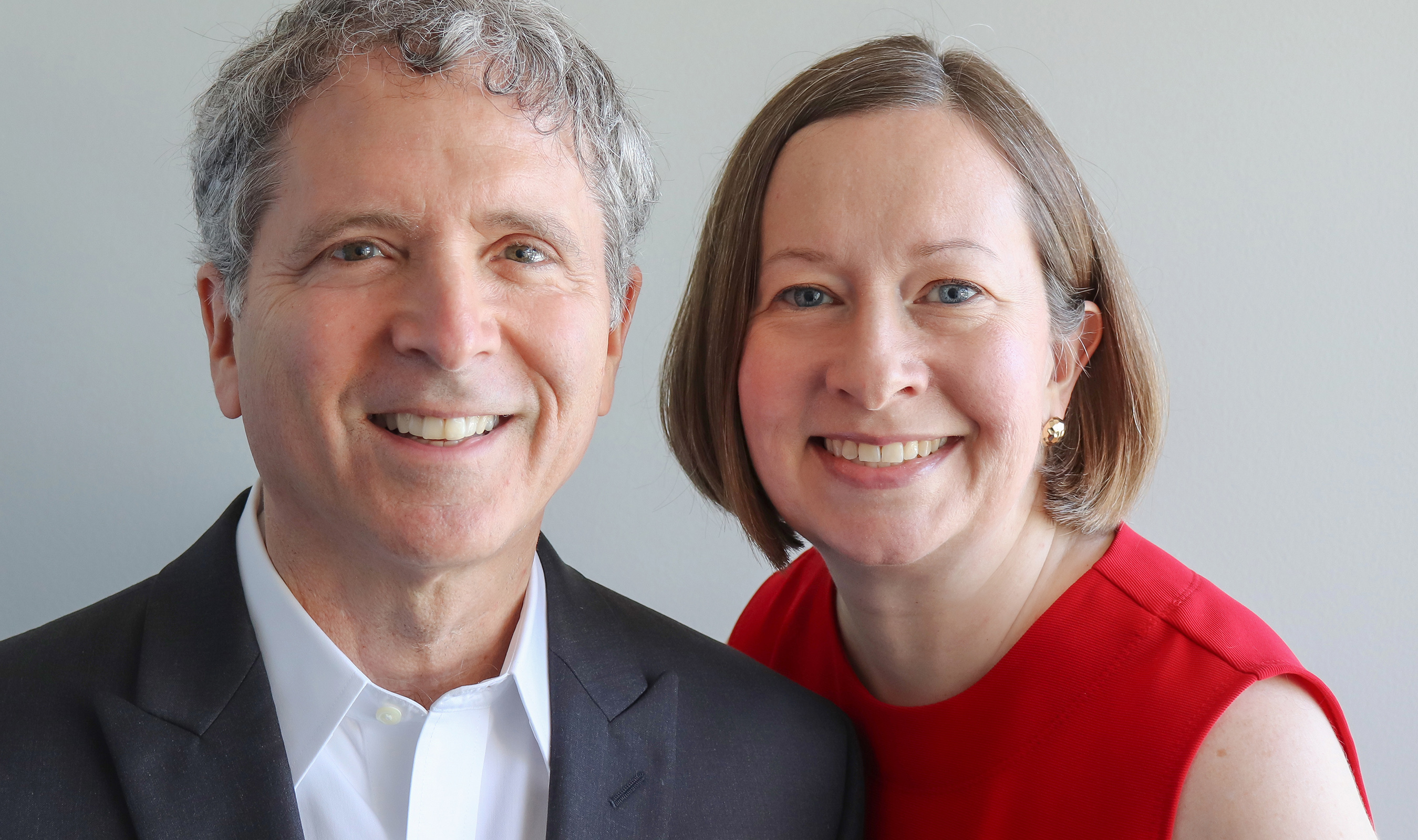Neurocrine Biosciences Expands Monumental Moments™ Program With World-Renowned Artist Jorge Rodriguez-Gerada to Raise Mental Health Awareness and Honor Those Impacted by the Pandemic
-
The Sculpture “Monumental Moments™ - The Hug” Revealed at NYC’s Lincoln Center on October 7 During Mental Illness Awareness Week and Ahead of World Mental Health Day Accompanied by Boston-Based Me2/Orchestra
-
Monumental Moments Community Platform and Charitable Initiative Continues to Encourage People to Reflect on the Importance of Caring for Their Mental Health and Connecting With Others on Social Media by Sharing Hashtag #MonumentalMoments
SAN DIEGO, Oct. 8, 2021 - Neurocrine Biosciences, Inc. (Nasdaq: NBIX) today announced a collaboration with renowned contemporary artist, Jorge Rodriguez-Gerada best known for his urban large-scale mural portraits, to create an original piece of art called Monumental Moments - The Hug, a nearly 10-foot-tall bronze sculpture that immortalizes the monumental times everyone has experienced during the pandemic and celebrates the human spirit, the resilience of the mental health community and all those who have been impacted by the pandemic.
Inspired by the hundreds of stories shared on MonumentalMoments.com over the past year, Monumental Moments - The Hug was unveiled on Thursday, October 7, to coincide with Mental Illness Awareness Week (October 3-9) and ahead of World Mental Health Day (October 10) at New York City’s iconic Lincoln Center. Performing during the reveal was the internationally renowned, Boston-based Me2/Orchestra, the world's only known classical music organization created specifically for individuals living with mental illness and the people who support them. The orchestra created an original musical score to kick off the Monumental Moments initiative in October 2020.
The Monumental Moments community platform and charitable initiative was created to offer hope, support, inspiration and a way for the mental health community and all those facing challenges during the pandemic to connect and share how they’re prioritizing their mental health. The Monumental Moments community is now encouraging people to share any lessons learned since the start of the pandemic, what they are grateful for and how they continue to care for their mental health.
“I am honored to work with Neurocrine Biosciences to join the Monumental Moments initiative and create something that means so much to me. The sculpture is dedicated to those who have been struggling with their mental health because of the pandemic and represents the importance of supporting each other during these unprecedented times,” Jorge Rodriguez-Gerada said. “Art can help bring people together, and I hope the sculpture will remind us all that we can overcome these difficult times as a community.”
To usher in this time of reflection, Rodriguez-Gerada’s sculpture of a hug, developed in collaboration with international art and design foundry UAP, represents the importance of connection and supporting each other and how much many of us missed hugging loved ones during these trying times. Research demonstrates that hugging can help minimize negative emotions and support a more positive state of being.1 The sculpture depicts two adults and a child in an embrace, and the green ribbon woven throughout represents the importance of continued mental health awareness and support, while highlighting the significance of this year’s Mental Illness Awareness Week and World Mental Health Day.
“Last year in support of the launch of Monumental Moments, we debuted an original score to bring to life the emotional impact this time has had on many,” said Caroline Whiddon, Executive Director and cofounder of Me2/Orchestra. “This year, we are pleased to perform again and stand alongside Jorge and this magnificent sculpture to celebrate the resilience of the Monumental Moments community that has grown over time.”
One in five adults live with a mental health condition,2 and research from the Kaiser Family Foundation (KFF) Health Tracking Poll, a KFF survey tool, found nearly half (47%) of adults continue to report negative mental health impacts as a result of the pandemic.3 People living with mental health conditions may also be impacted by tardive dyskinesia (TD), a movement disorder associated with taking medication to treat bipolar disorder, depression or schizophrenia.4-6 These movements are characterized by uncontrollable, abnormal, and repetitive movements of the face, torso, and/or other body parts, which can impact those living with TD socially, emotionally, and physically.4-8
Public posts on social media using the hashtag #MonumentalMoments will help support people living with mental health conditions, including those living with TD, and the challenges that they may experience. On behalf of posts shared, Neurocrine Biosciences is making donations to mental health organizations as part of its commitment to support people living with mental health conditions.
“At Neurocrine Biosciences, we remain committed to supporting people living with mental health conditions and associated challenges like tardive dyskinesia,” said Kevin Gorman, Ph.D., Chief Executive Officer at Neurocrine Biosciences. “We’re proud to work with Jorge Rodriguez-Gerada and the Me2/Orchestra to help support all those who have faced mental health challenges during the pandemic. Our hope is that people continue to engage in the community and help others by sharing their Monumental Moments about what they have learned or how they have grown.”
For more information including mental health resources, visit MonumentalMoments.com or Facebook.com/MonumentalMomentsPage and join the conversation online by sharing #MonumentalMoments.
About Tardive Dyskinesia (TD)
Tardive dyskinesia (TD) is an involuntary movement disorder characterized by uncontrollable, abnormal and repetitive movements of the torso, extremities and/or face, which can include hand or foot movements, rocking of the torso, lip smacking, grimacing, tongue protrusion, facial movements or blinking, as well as puckering and pursing of the lips. The condition is associated with taking certain mental health medicines such as antipsychotics, which are commonly prescribed to bipolar disorder, depression and schizophrenia. In patients with TD, these treatments are thought to result in irregular dopamine signaling in a region of the brain that controls movement. The symptoms of TD can be severe and are often persistent and irreversible. TD is estimated to affect approximately 600,000 people in the U.S.
About Neurocrine Biosciences
Neurocrine Biosciences is a neuroscience-focused, biopharmaceutical company dedicated to discovering, developing and delivering life-changing treatments for people with serious, challenging and under-addressed neurological, endocrine and psychiatric disorders. The company's diverse portfolio includes FDA-approved treatments for tardive dyskinesia, Parkinson's disease, endometriosis*, uterine fibroids* and clinical programs in multiple therapeutic areas. For nearly three decades, Neurocrine Biosciences has specialized in targeting and interrupting disease-causing mechanisms involving the interconnected pathways of the nervous and endocrine systems. For more information, visit neurocrine.com, and follow the company on LinkedIn. (*in collaboration with AbbVie)
About Jorge Rodriguez-Gerada
Jorge Rodriguez-Gerada, a Cuban American contemporary artist, is recognized worldwide for his unique “urban” large-scale mural portraits that can be seen from space. By utilizing walls and floors as canvases and citizens as models, he became one of the most well-known urban artists who displays his work on walls of different cities around the world. Rodriguez-Gerada began his career in the early 90s as a founding member of New York’s Culture Jamming Movement. Since then, he has mastered his artistic directions as a muralist, sculptor and land artist. Rodriguez-Gerada has created a series of important large-scale murals, including his work in Queens, New York, memorializing the late Dr. Decoo, a Latino pediatrician who lost his life after battling the pandemic in New York City, and the Hispanic and African American communities who are disproportionately affected by COVID-19. Rodriguez-Gerada has collaborated with multiple organizations and institutions, such as Google Research Lab, The Smithsonian National Portrait Gallery, the United Nations Sustainable Development Group, to work to forward positive initiatives and projects.
About Me2/Orchestra
Me2/Orchestra is the world's only known classical music organization created specifically for individuals living with mental illness and the people who support them. Founded in 2011 by Ronald Braunstein and Caroline Whiddon, both of whom struggle with mental health conditions, it serves as a model organization where people with and without mental illnesses work together in an environment where acceptance is an expectation, patience is encouraged, and supporting each other is a priority. Together, they have found music to be a medium that helps inspire people and bring them together. Me2/Orchestra’s mission is to erase the stigma surrounding mental illness through inspiring performances and supportive classical music ensembles.
Contact: Neurocrine Biosciences
Tony Jewell (Media)
858-617-7578
[email protected]
Todd Tushla (Investors)
858-617-7143
[email protected]
1 Robinson KJ, Hoplock LB, Cameron JJ. When in doubt, reach out: touch is a covert but effective mode of soliciting and providing social support. Soc Psychol Personal Sci. 2015;6(7):831-839. doi:10.1177/1948550615584197
2 National Alliance on Mental Illness. Mental health by the numbers. Accessed August 2021. https://www.nami.org/mhstats
3 Kearney A, Hamel L, Brodie M. KFF Health Tracking Poll – mental health impact of the COVID-19 pandemic: an update. Kaiser Family Foundation. Published April 14, 2021. Accessed August 2021. https://www.kff.org/coronavirus-covid-19/poll-finding/mental-health-impact-of-the-covid-19-pandemic/
4 Task Force on Tardive Dyskinesia. Tardive Dyskinesia: A Task Force Report of the American Psychiatric Association. American Psychiatric Association; Washington, DC; 1992.
5 Cloud LJ, Zutshi D, Factor SA. Tardive dyskinesia: therapeutic options for an increasingly common disorder. Neurotherapeutics. 2014;11(1):166-176.
6 American Psychiatric Association. Diagnostic and Statistical Manual of Mental Disorders. 5th ed. American Psychiatric Association; 2013:712.
7 Guy W. ECDEU Assessment Manual for Psychopharmacology. National Institute of Mental Health; 1976.
8 Ascher-Svanum H, et al. Tardive dyskinesia and the 3-year course of schizophrenia: results from a large, prospective, naturalistic study. J Clin Psych. 2008;69(10):1580-1588.





